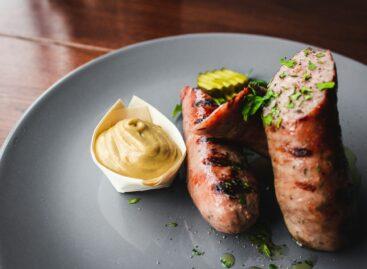Hungarian Sausage Culture: Traditions, Recipes, and Specialties
Blood or liver, rice or bread, rich or simple – everyone has their own preference when it comes to hurka, but one thing is certain: this traditional Hungarian delicacy is an essential part of pig slaughter feasts. In this article, we explore the different types of authentic hurka made by our ancestors across Hungary and uncover the ‘secret’ ingredients that make this humble dish truly memorable.
The Difference Between Hurka and Kolbász
 While hurka and kolbász may appear similar at first glance, there are fundamental differences between them. Kolbász is made exclusively from meat and fat, whereas hurka often contains offal, blood, skin, and plant-based ingredients such as rice, millet, or buckwheat. Unlike kolbász, hurka is always pre-cooked (scalded) after stuffing, making it more perishable. Kolbász, on the other hand, is more durable and can be stored for longer periods.
While hurka and kolbász may appear similar at first glance, there are fundamental differences between them. Kolbász is made exclusively from meat and fat, whereas hurka often contains offal, blood, skin, and plant-based ingredients such as rice, millet, or buckwheat. Unlike kolbász, hurka is always pre-cooked (scalded) after stuffing, making it more perishable. Kolbász, on the other hand, is more durable and can be stored for longer periods.
Traditional Hurka Varieties in Hungary
Different regions of Hungary have their own distinct hurka recipes. The most well-known varieties include liver and blood sausages, but some areas incorporate unique ingredients. In Western Hungary, particularly in the Őrség and Zala regions, buckwheat was a staple ingredient in hurka, whereas in Szabolcs-Szatmár-Bereg county, cornmeal and apples were commonly used.
Essential Ingredients and Seasonings
Hurka typically consists of meat, offal, skin, fat, and a grain component such as rice or buckwheat. The seasoning varies by region, but the following spices are commonly used:
- Sweet and hot paprika
- Black pepper
- Garlic
- Onion
- Caraway seeds
Additionally, depending on the region, hurka may also contain complementary spices such as coriander, marjoram, juniper berries, or thyme.
Unique Hungarian Hurka Varieties
Beyond the standard rice and liver-based hurka, several regions boast unique versions. One such variety is the Göcseji buckwheat blood sausage from Western Hungary. In this recipe, buckwheat is boiled in scalding liquid, then mixed with ground pork jowl, fresh blood, and spices before being stuffed and cooked. The result is a firm-textured, flavorful sausage best enjoyed with fresh bread and pickles.
Hurka remains an essential part of Hungarian culinary heritage, particularly during the winter season and pig slaughter feasts. While modern food production has influenced consumption habits, homemade hurka continues to preserve the rich traditions and local flavors of Hungarian gastronomy.
Related news
Sausages, salamis, tactics
🎧 Hallgasd a cikket: Lejátszás Szünet Folytatás Leállítás Nyelv: Auto…
Read more >Bratwurst war rages in Germany
🎧 Hallgasd a cikket: Lejátszás Szünet Folytatás Leállítás Nyelv: Auto…
Read more >The new Hungaricum tenders are coming
🎧 Hallgasd a cikket: Lejátszás Szünet Folytatás Leállítás Nyelv: Auto…
Read more >Related news
Hungarian Product is 20 years old – a reliable compass in the domestic FMCG sector
🎧 Hallgasd a cikket: Lejátszás Szünet Folytatás Leállítás Nyelv: Auto…
Read more >KPMG CEO Outlook 2025: replanned trust
🎧 Hallgasd a cikket: Lejátszás Szünet Folytatás Leállítás Nyelv: Auto…
Read more >Sunday lockdowns may return in Europe
🎧 Hallgasd a cikket: Lejátszás Szünet Folytatás Leállítás Nyelv: Auto…
Read more >







